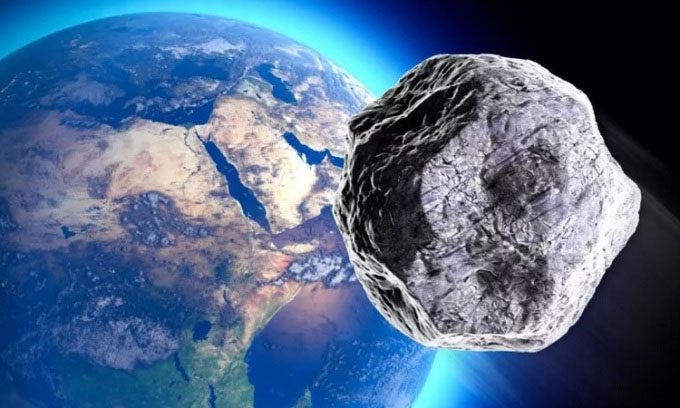2022 NX 1: A Mini-Moon with a 5 – 10m Diameter That Earth May Capture Again, Possibly Impacting in 2075 – 2122.
Last year, two amateur astronomers, Grzegorz Duszanowicz and Jordi Camarasa, discovered an object orbiting Earth but not completing a full orbit. The strange object was named 2022 NX 1. At the time, they speculated that it could be an asteroid temporarily captured by Earth’s gravitational pull, but it might also be debris from a rocket.

Simulation of an asteroid flying near Earth. (Image: Naeblys)
A new study published in Astronomy and Astrophysics confirms that 2022 NX 1 is a mini-moon with the potential to impact Earth by the end of this century, as reported by IFL Science on February 21. This research was conducted by expert R. de la Fuente Marcos at Complutense University of Madrid and colleagues.
In addition to the Moon, Earth sometimes “captures” other objects. These are known as mini-moons, which stray into Earth’s gravitational field and remain for a short time. However, due to the thousands of artificial satellites and rocket debris launched into orbit, distinguishing them can be challenging.
2022 NX 1 was detected on July 2, 2022, from the Moonbase South Observatory in Namibia. It is estimated that this object came closest to Earth on June 26, 2022.
Experts assess that the probability of 2022 NX 1 colliding with Earth is 1.2% between 2075 and 2122. With an estimated diameter of 5 – 10m, this mini-moon would not cause significant damage but could lead to an event similar to the Chelyabinsk meteor. This event occurred on February 15, 2013, when an asteroid about 18m wide unexpectedly exploded over Chelyabinsk, Russia. The shockwave from the explosion shattered windows in six cities and required medical attention for 1,500 people.
In the new study, scientists used the Gran Telescopio Canarias in Spain to observe 2022 NX 1. They confirmed that its spectrum does not resemble artificial materials nor is it debris from Earth’s main moon.
2022 NX 1 qualifies as an asteroid and is considered a mini-moon, having been “captured” by Earth for 21 days. This duration is insufficient for it to complete a full orbit around Earth. Previously, 2022 NX 1 was temporarily captured at least twice in 1980 and 1981. Experts believe it will experience this condition again around 2051.
2022 NX 1 is significantly larger than previously confirmed mini-moons. For instance, the mini-moon 2020 CD3 has a maximum length of only 3.5m. 2022 NX 1 is classified as a type K asteroid, while previous mini-moons were type V asteroids. “The discovery of 2022 NX 1 indicates that mini-moons can be larger by several meters and belong to different groups based on their surface composition,” the research team concluded.





















































